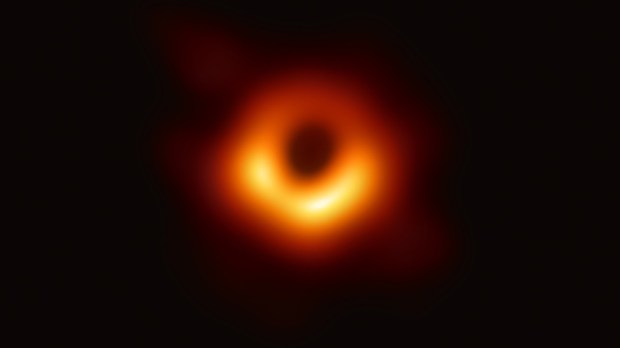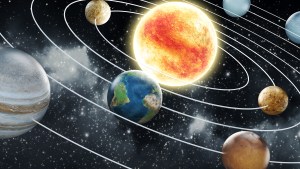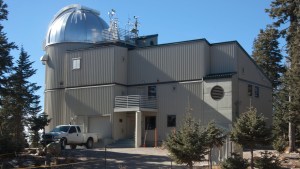You have probably seen the headlines: “Scientists capture first-ever image of our galaxy’s supermassive black hole” and so forth. What does that mean? Well, for one thing, it means there is a big pothole in the Camino de Santiago!
The Milky Way was once known as El Camino de Santiago
Let me explain:
Our galaxy is called the “Milky Way” because seen from Earth, it has the appearance of a whitish path through the night sky. It is a milk-white road, from the Greek γάλακτος (galaktos) for milk (think of lactation, or lactose intolerance). This path in the sky has also been associated with St. James. The great astronomer Johannes Kepler, who in the 17th century worked out the mathematics of orbits and thus helped set the stage for the discovery of black holes, wrote of “the way called by the Greeks the Milky Way and by us the Road of St. James.” Our galaxy is El Camino de Santiago. And there is a hole in it!
A black hole is an object whose gravitational field is so strong that not even light can escape from it. Or, since according to Albert Einstein gravity is a warping of space and time, a black hole is an object whose gravitational field is so strong that space and time are indefinitely warped. Black holes can be larger or smaller. A single star can become a black hole when its nuclear fuel runs out and its gravity causes it to collapse in upon itself.
Astronomers have theorized that at the centers of many galaxies are black holes with the masses of many, many stars. Why? Because at the centers of galaxies some really energetic things are observed to happen in very small places, and objects are seen orbiting very rapidly. Something very small and very massive must be there. Black holes were the best explanation for what that might be.
But now we know for sure that there is a black hole at the center of our galaxy, the Milky Way, because astronomers have taken a picture of it, using a globe-spanning array of radio receivers known as the Event Horizon Telescope!
Vatican astronomers react to photos
Astronomers here at the Vatican’s astronomical observatory (www.VaticanObservatory.org) were of course excited about the news of our galaxy’s black hole.
Dante Minniti, an astronomer at the Universidad Andres Bello in Chile and an adjunct scholar at the Vatican Observatory remarked, “For the first time we have a direct image of the central black hole in our galaxy. We know that the observed ring structure and shadow [in the image] is due to the presence of a black hole with the correct distance and mass predicted by Einstein’s theory of General Relativity.”
Fr. Richard D’Souza, S.J., a V.O. astronomer, commented that the image seems to rule out exotic theories that postulated that the stars that are seen to orbit rapidly around the center of the Milky Way were not orbiting a black hole at the center, but rather some unusual bunch of dense matter there.
He noted, “One thing that stands out is the size of the image of the black hole at the center of our galaxy as compared to the one at the center of the galaxy M87 that was discovered a couple of years ago by the same team. The event horizon of the Milky Way black hole is much smaller than that of M87, showing the relative size of the black holes, but also the difficulty of this present measurement.” (Small here is a relative term—the Milky Way’s black hole has the mass of about four million suns!) Fr. D’Souza added that this discovery shows once again that “Einstein was right.”
What does the discovery tell us about Creation?
Someone asked me whether this discovery tells us anything about the creation of the world.
Yes, it does.
It shows that the world is governed by knowable laws of nature that have a very mathematical structure. Einstein came up with his theories by thinking mathematically about things like gravity and weight and acceleration. Kepler spoke of God granting to an astronomer “the privilege of seeing more clearly with the eyes of the mind.” Our understanding of math is in our minds—no one can experimentally verify the 100th digit of pi, for example. This image of a black hole shows again that the math within the human mind—within Einstein’s mind, specifically—really does apply to the universe. That points to there being something behind the universe and the human mind that extends beyond just material stuff.
Is a giant black hole in the middle of the Milky Way something to worry about because it will somehow “suck up” the rest of the galaxy? No. Black holes obey the laws of orbits and gravity just like everything else. If the sun were somehow turned into a black hole, the Earth would be very dark, but it would keep on orbiting it, just like it does now.
So go out to some dark skies this summer, where you can see the Milky Way or the Way of St. James. Look for the constellation of Sagittarius (there are free smartphone apps that help with this). That’s where lies the center of the Milky Way, and its black hole.





